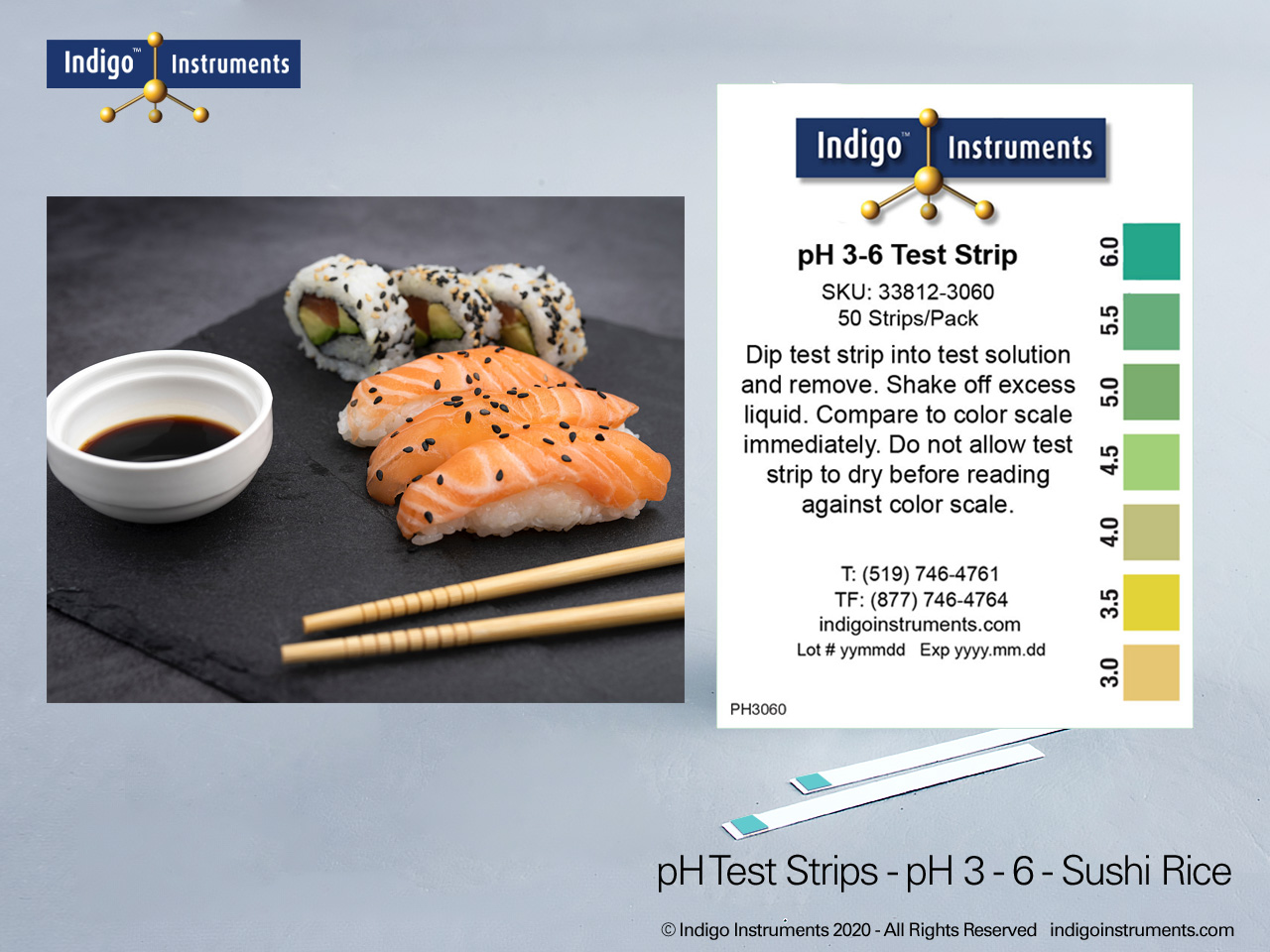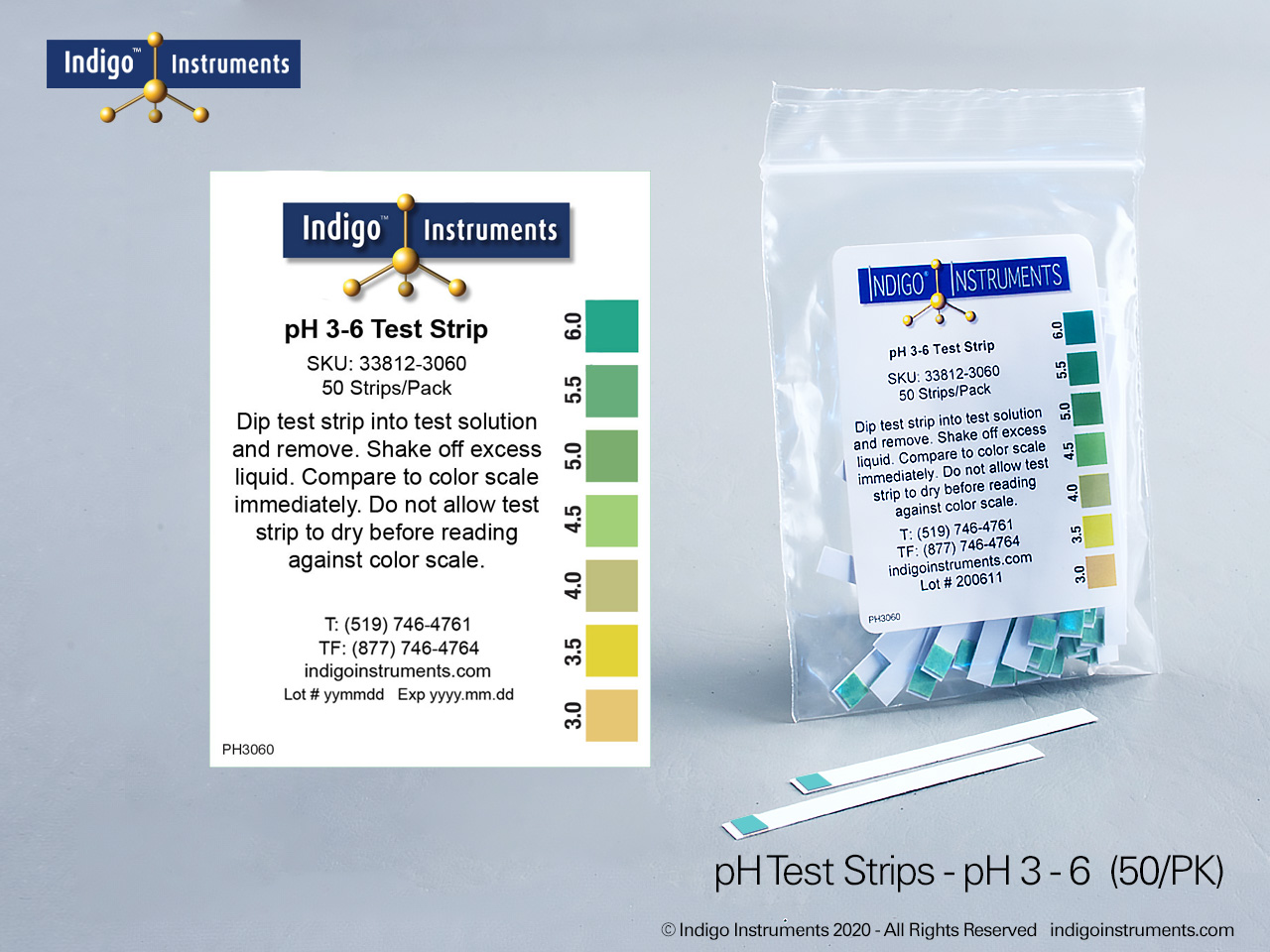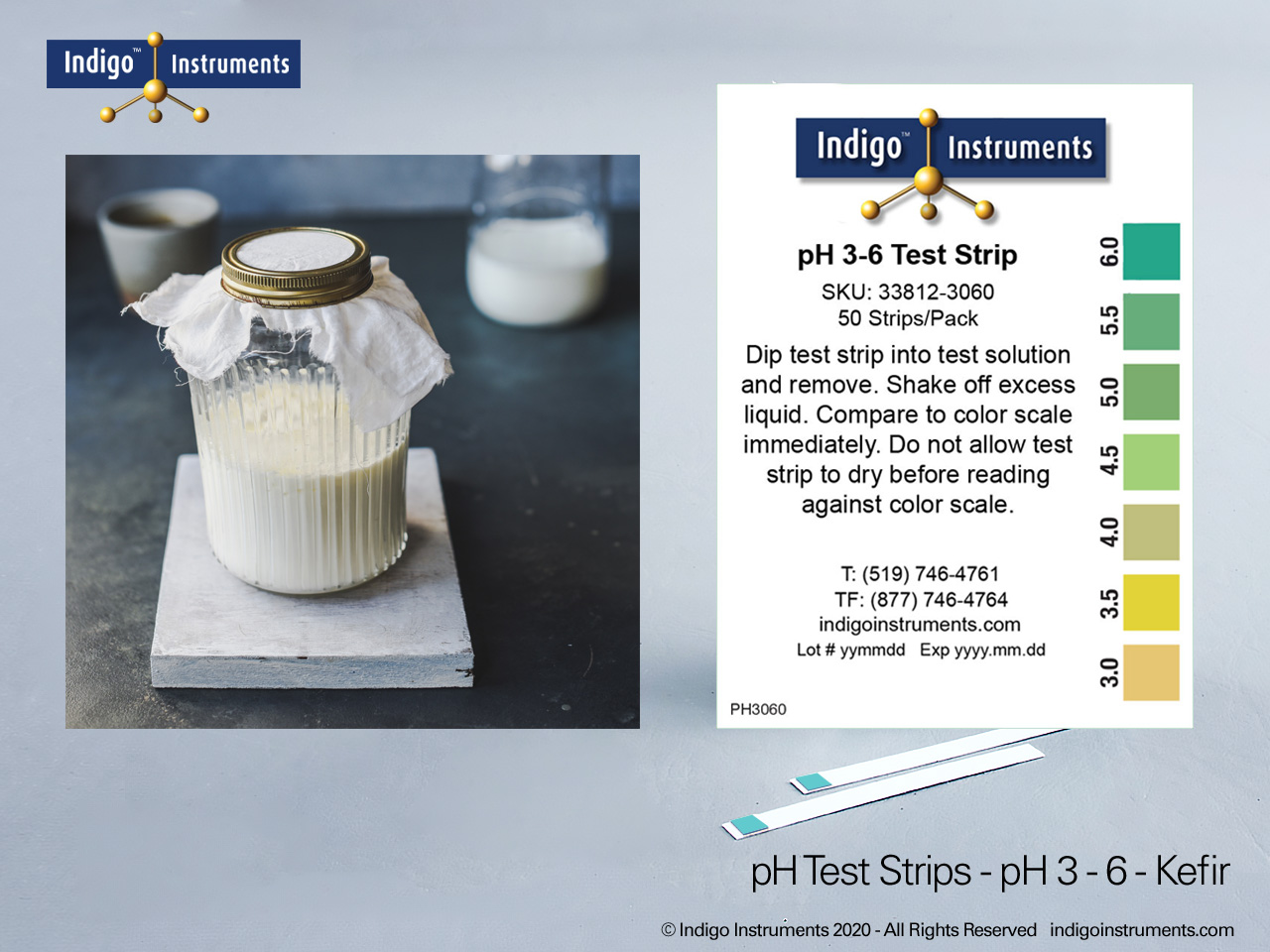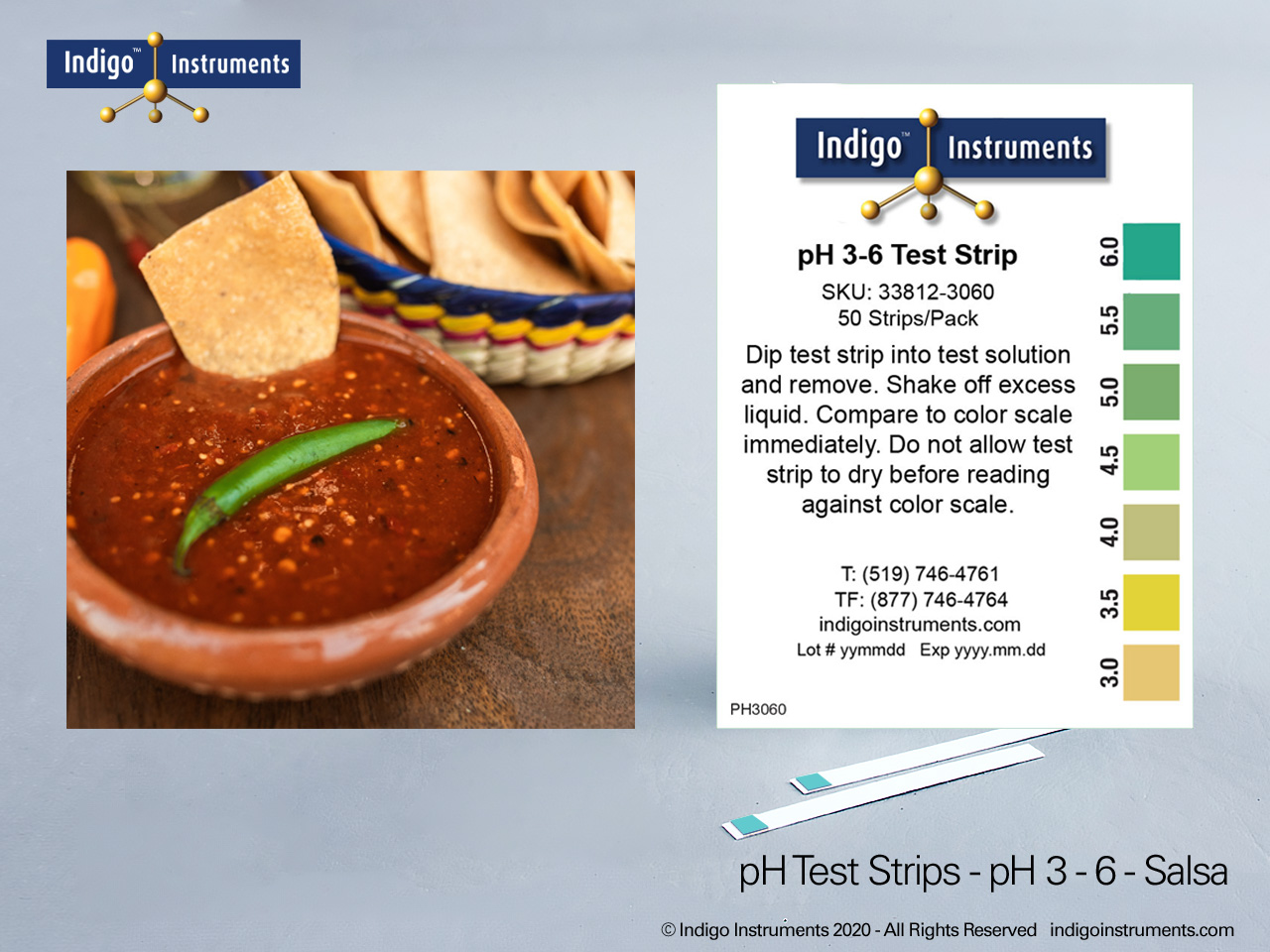Sushi Rice Acid Level Test Strips 50/Pack
SKU: 33812-3060
Buy Indigo® pH test strips for your sushi rice acidic pH range preparation, only $8.95 for 50 strips.
The biggest cause of foodborne illness in sushi rice is contamination by harmful bacteria found on raw fish. Sushi rice is typically kept at room temperature which promotes bacterial growth. To prevent cross contamination, acidify the rice with vinegar to lower its pH. Test strips help ensure you've added enough vinegar to achieve a safe level of pH 4.5 or less. This will limit the growth of pathogenic bacteria associated with serious health risks.
Achieving the Optimal pH Level for Sushi Rice
Rice vinegar is a traditional ingredient used in the making of sushi rice. In addition to taste, this can ensure your sushi rice is in the pH range of optimum acidity of 4.6 or less. Reduce food safety risks associated with rice preparation & storage in a higher than normal 21C ambient temperature potential danger zone.
Make sure you measure the acidity (pH) of your sushi rice within 30 minutes of mixing your cooked rice and rice vinegar. Spot checking your rice with the procedure listed below is recommended for the optimal surface contact needed for a direct measurement. This will ensure your food product has full hazardous analysis critical control points to satisfy health department regulations.





Great news & an excellent example of how to use a test strip to make preparing tomato sauce & salsa easier. This old blog might be of some interest to others: How Does Litmus Paper Work? Not Like pH Strips?.